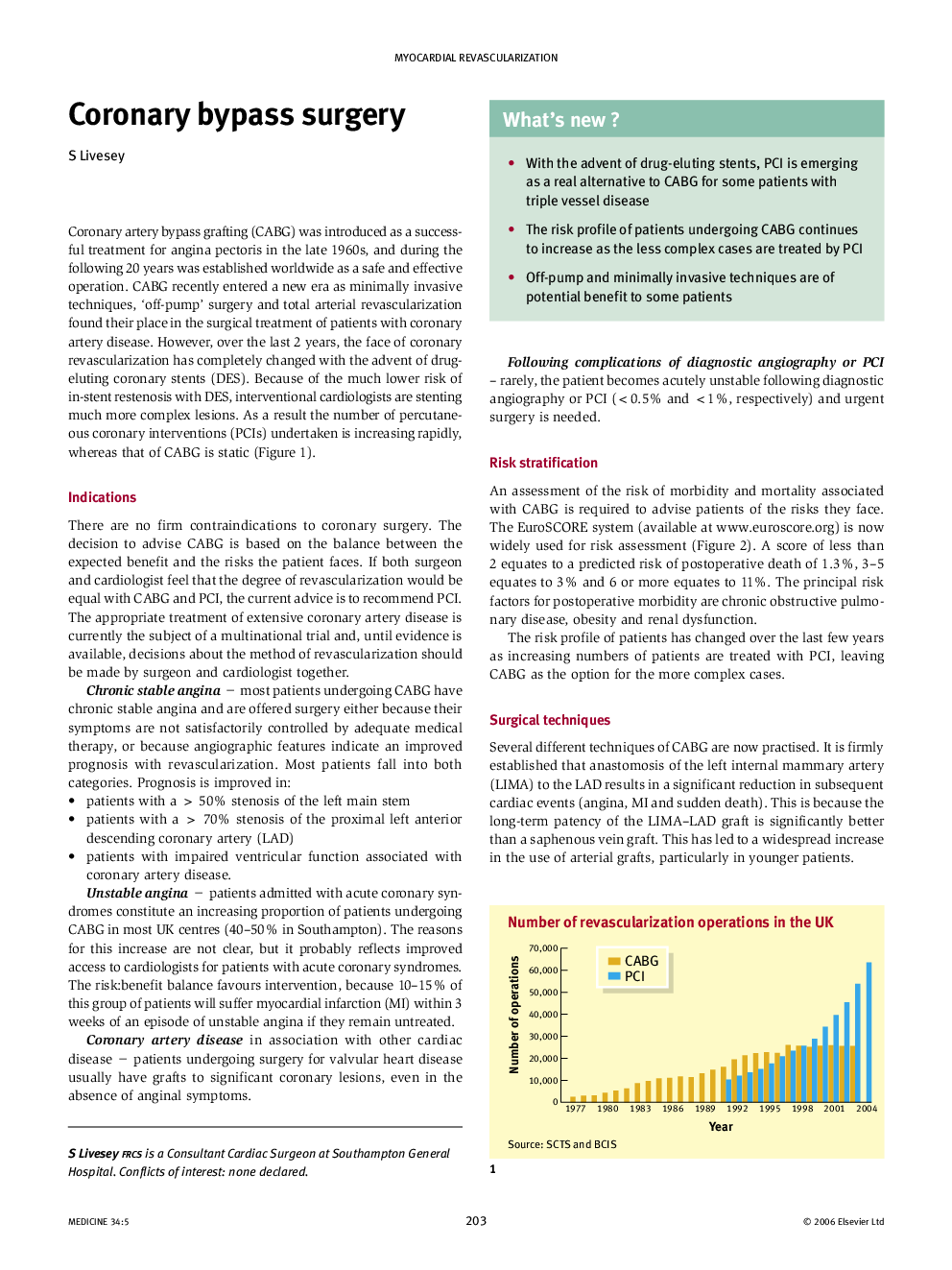| Article ID | Journal | Published Year | Pages | File Type |
|---|---|---|---|---|
| 3804672 | Medicine | 2006 | 4 Pages |
Coronary artery bypass grafting is firmly established as a safe and effective treatment option for patients with CAD. However, over the last two years, the face of coronary revascularisation has been completely changed with the advent of drug-eluting coronary stents (DES). Due to the much lower risk of stent thrombosis with DES interventional cardiologists are stenting much more complex lesions. As a result the rate of PCI is growing rapidly whilst CABG rates are static. If both surgeon and cardiologist feel that the degree of revascularisation would be equal, then the current advice is to recommend PCI. The appropriate treatment of extensive coronary artery disease is currently the subject of a multi-national trial and until evidence is available, decisions should be made by a surgeon and a cardiologist together. Although most patients undergoing CABG have chronic stable angina, and increasing number of patients are requiring CABG for acute coronary syndromes. Prognosis is improved in patients with a > 50% stenosis of the left main stem, patients with a > 70% stenosis of the proximal left anterior descending coronary artery and in patients with impaired ventricular function. Off pump techniques are now widely used – though the majority of cases are done on pump. Although each has advantages and disadvantages, in practice, there is little to chose between the two in terms of outcome. The mortality rate from CABG in the UK remains at about 3% despite increasing patient co-morbidity. Waiting times for CABG have fallen hugely and now no patient waits longer than three months for CABG. Whether or not interventional techniques will further lessen the need for CABG remains to be seen.
